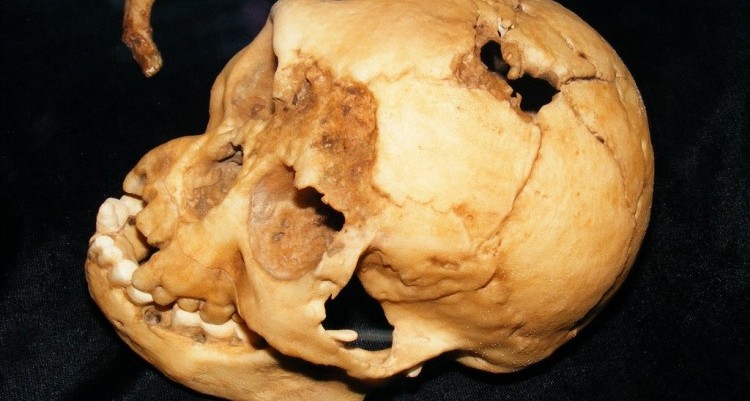
In the search for the origins of mankind, the discovery of a tiny human-like creature was an exciting and unexpected find. In 2003, excavation of Liang Bua Cave, on the island of Flores in Indonesia uncovered what scientists called ‘the most important find in human evolution for 100 years.’
Excavation of a nearly complete skeleton, along with sophisticated stone instruments, were dated from 95,000 to 13,000 years ago. Dubbed Homo floresiensis, the name suggested a previously undiscovered species of human. The most stunning features of H. floresiensis are its small body, estimated at 3 feet and 6 inches, along with a small cranial capacity. Other less obvious features that distinguished the bones from that of modern H. sapiens, included the form of the teeth, absence of a chin and the lesser angle in the upper arm bone.
Even with a small brain, discoverers linked H. floresiensis with advanced behaviors. The cave shows evidence of cooking fires and ancient elephant bones associated with the site have marks indicating butchering. Cuts on the animal bones required the usage of stone tools and apparent cooperative hunting techniques by these hominids.
Homo floresiensis was unveiled October 28, 2004 and was nicknamed the “Hobbit”, after the fictional race in J.R.R Tolkien’s book The Hobbit. The proposed scientific name for the species was Homo hobbitus and was initially placed in its own genus, Sundanthropus floresianus.
However, intense scrutiny by international researchers suggest that the single specimen does not represent a new species. Instead, it is the skeleton of a developmentally abnormal human. According to the researchers, the H. floresiensis cranium contains features most consistent with a diagnosis of Down syndrome.
The first descriptions of Homo floresiensis focused on highly unusual anatomical features: a cranial volume reported as only 380 milliliters, suggesting a brain less than a third of the size of an average modern human, and exceptionally short femurs. Comparisons were made to earlier hominids, such as Homo erectus and Australopithecus, but other traits were characterized as indications of a new species.
Two scholarly papers published August 4, in the Proceedings of the National Academy of Sciences insist the original figures on cranial volume and stature are blatant underestimates. New scientists allowed to study the remains have consistently measured the cranial volume at about 430 milliliters.
Researchers built their diagnosis of Down syndrome, one of the most commonly occurring developmental disorders in modern humans, based on indications of craniofacial asymmetry. A left-right mismatch of the skull was noted as early as 2006, but it had not been reported by the excavating team. Later this telling characteristic was dismissed as a result of the skull’s being long buried under heavy layers of sediment.
.
These new findings require a complete revision of the original theory of the creature representing a separate species. The edited volume falls in the range predicted for a modern human with Down syndrome. Even the thigh bones, once considered a unique morphological trait, point toward the disease which causes diagnostically short leg bones. Though these features are an unusual discovery in ancient fossils, they do not lead to the classification of a new hominid species.
By Phedra Johnson
Sources:
Philly.com
ABCScience
ScienceNews
“LB1 skull” by Ray from Queens, USA – LB1 skullUploaded by FunkMonk. Licensed under CC BY-SA 2.0 via Wikimedia Commons.

